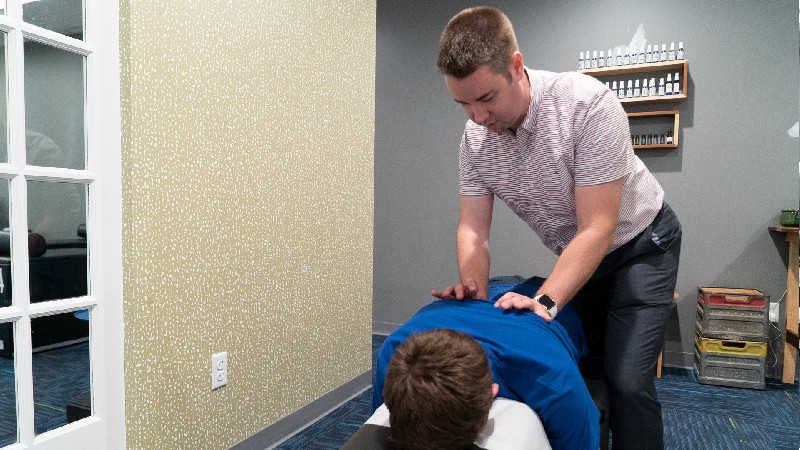Chronic pain can be a frustrating and debilitating condition, affecting millions of people every year. Whether it’s due to an injury, inflammation, or a long-standing issue, finding an effective way to manage and relieve pain is crucial for improving quality of life. Traditional pain management methods, such as medication and injections, have long been the go-to treatment for chronic pain. However, in recent years, an innovative approach—shockwave therapy—has gained attention for its ability to treat chronic pain without the need for invasive procedures or long-term medication use.
In this blog, we’ll explore the differences between shockwave therapy and traditional pain management, helping you understand which approach might be more suitable for treating chronic pain.
What is Traditional Pain Management?
Traditional pain management methods have typically revolved around three main approaches: medication, injections, and physical therapy.
1. Medication
Pain relief medications, including over-the-counter drugs like ibuprofen and acetaminophen, or prescription opioids and muscle relaxants, are commonly used to manage chronic pain. While these medications can provide temporary relief, they don’t address the underlying cause of the pain and can come with significant side effects, such as dependency, tolerance, and long-term health risks.
2. Injections
Injections, such as corticosteroid injections or nerve blocks, are often used when medications aren’t enough to manage pain. These injections are typically aimed at reducing inflammation or interrupting nerve signals to alleviate discomfort. While effective for some people, injections carry potential risks, including tissue damage, infections, and the possibility of the pain returning after the effects wear off.
3. Physical Therapy
Physical therapy is often recommended for chronic pain management, particularly when pain is related to musculoskeletal issues or injuries. A physical therapist will work with patients to improve mobility, strength, and flexibility through a series of exercises. While physical therapy can help address some chronic pain issues, it may take weeks or months to see significant improvements, and it might not be effective for all conditions.
While traditional pain management methods can be helpful in controlling symptoms, they are not without limitations. Many people find themselves relying on medications or injections for extended periods, which can lead to adverse side effects and a cycle of temporary relief without long-term solutions.
What is Shockwave Therapy?
Shockwave therapy is a non-invasive treatment that uses high-energy acoustic waves to promote healing and reduce pain. These waves are directed at the affected area, stimulating blood flow, increasing collagen production, and breaking down scar tissue. Shockwave therapy has been used for a variety of conditions, including tendonitis, plantar fasciitis, and chronic pain in areas such as the shoulders, knees, and lower back.
Unlike traditional pain management, shockwave therapy addresses the root causes of pain rather than simply masking the symptoms. By promoting tissue repair and reducing inflammation, shockwave therapy can provide long-term pain relief and improved function.
How Does Shockwave Therapy Work?
During a shockwave therapy session, a specialized device is used to generate high-energy sound waves that are directed at the painful area. The waves stimulate the body’s natural healing processes by encouraging circulation, promoting tissue regeneration, and reducing inflammation. The treatment is typically applied in a series of sessions, with each session lasting around 10 to 15 minutes.
Patients often report a significant reduction in pain and improvement in mobility after just a few sessions. Shockwave therapy is FDA-approved and considered a safe, effective alternative to more invasive treatments like surgery or injections.
Shockwave Therapy vs. Traditional Pain Management: A Comparison
1. Addressing the Root Cause vs. Masking the Symptoms
One of the most significant differences between shockwave therapy and traditional pain management is that shockwave therapy addresses the root cause of pain, while traditional treatments often focus on symptom relief. Pain medications and injections may provide short-term relief, but they do not resolve the underlying issue causing the pain. Shockwave therapy, on the other hand, promotes healing in damaged tissues, reduces inflammation, and helps restore mobility, offering long-term relief and reducing the need for ongoing treatments.
2. Invasiveness
Traditional pain management methods, such as injections and surgeries, are invasive and carry risks such as infection, scarring, and prolonged recovery times. Shockwave therapy, however, is non-invasive, meaning there are no needles, incisions, or recovery periods involved. Patients can typically resume their normal activities immediately after treatment, making it a more convenient and less disruptive option for chronic pain relief.
3. Long-Term Relief vs. Temporary Solutions
Many traditional pain management methods only provide temporary relief. Medications may mask pain, but they do not cure the underlying condition. Injections can offer short-term pain relief, but their effectiveness often diminishes over time. Shockwave therapy, on the other hand, focuses on stimulating healing and tissue repair, offering long-term relief from chronic pain. By addressing the root cause of the pain, shockwave therapy helps reduce the need for continuous treatments.
4. Side Effects and Risks
Pain medications, especially opioids, carry significant risks, including addiction, tolerance, and long-term health problems. Injections can cause tissue damage, infections, and nerve damage. Shockwave therapy is considered to have minimal risks and side effects, with most patients experiencing only mild discomfort during the procedure. Side effects are generally rare, making it a safer option for those looking for long-term pain relief without the risk of dependency or complications.
Is Shockwave Therapy Right for You?
If you are suffering from chronic pain and have not found relief through traditional methods, shockwave therapy might be a solution worth considering. Shockwave therapy is particularly effective for conditions such as tendonitis, plantar fasciitis, and chronic musculoskeletal pain. It is also a great option for patients who want to avoid the risks associated with surgery or injections.
Before starting shockwave therapy, it’s essential to consult with a trusted chiropractor who specializes in this treatment. They can assess your condition and recommend a personalized treatment plan to help you achieve long-term pain relief.
